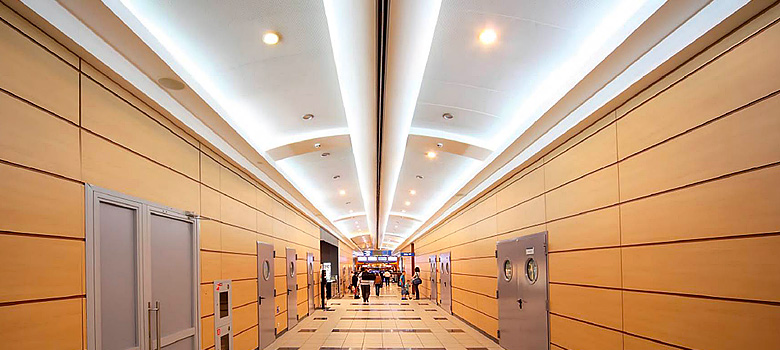
Chromaticity
Chromaticity is an objective specification of the quality of a colour regardless of its luminance as determined by its hue and colourfulness. It is the quality of a colour or light with reference to its purity and its dominant wavelength.
Colour Temperature
One aspect of lamp colour is its colour appearance – whether the light from the lamps look ‘warm’ or ‘cool’ – measured by the correlated colour temperature (CCT). lamps with a warm appearance having a CCT of 2700-3000K are generally considered appropriate in a domestic setting. Lamps of 4000K and above are considered ‘cool’ and are more appropriate for office and some retail applications.
CRI
Colour rendering index. This is the ability of a light source to show surface colours as they should be, usually in comparison with a tungsten or daylight source. Lamps with poor colour rendering will distort some colours. Colour rendering is usually assessed by the CIE colour rendering index (CRI or Ra) – a number between 0 and 100, where lower values indicate poor colour rendering and higher ones good colour rendering. CRI only works for approximately white sources. Guidance in the Cibse Code recommends lamps with CRI between 90 and 100 for inspection and colour matching. Where accurate colour judgement is required, such as in offices and shops, lamps with CRI over 80 are recommended. Researchers at NIST in the US have suggested that the colour rendering index is less suitable for LED spectra, especially in the way saturated colours like red and yellow are dealt with. They have proposed an alternative colour quality scale (CQS).
Dali
Dali stands for Digital Addressable Lighting Interface and is a controls protocol agreed by all the major manufacturers in the lighting industry. It is set out in the technical standard IEC 62386. The AG-Dali is a working group set up by the manufacturers and institutions in the field of digital lamp and luminaire control to promote Dali technology and applications.
IP
IP stands for index of protections and consists of the letters IP followed by two digits and an optional letter. It classifies the degrees of protection provided against the intrusion of solid objects (including body parts like hands and fingers), dust, accidental contact and water in luminaires and other equipment. For example, a fitting rated IP22 is protected against insertions of fingers and will not be damaged or become unsafe during exposure to vertically or nearly vertically dripping water. See the table here.
L70
L70 is a term used to specify a lumen maintenance factor for a light source. Lumen maintenance compares the amount of light emitted by a source when it is new with the amount emitted at a specific time in the future. The L70 figure is the time taken for the light emitted by the source to drop to 70 per cent of its ‘as new’ value. For example, if a luminaire produced 1,000 lm when new and produced 700 lumens after 30,000 hours it would have a L70 lumen maintenance of 30,000 hours.
70 percent is not the only measure used in the lighting industry – some use L50 or L80 to specify lumen maintenance factor.
LOR
Light output ratio – the percentage of light emitted from the light source that makes it out of the luminaire. An LOR of 70 means 30 per cent of the light from the lamp is lost inside the reflector and light fitting.
LUMEN
‘Lumens’ is a standardised unit of measurement of the total amount of light produced by a light source e.g. a light bulb. Lighting designers also use the term ‘luminous flux’ to describe light output. Examples of light output (lumens) by some commercially used light bulbs are shown below:
- 28w G9 lamp = 400 lumens
- 18w 2G11 lamp = 1200 lumens
- 24w T5 High Output lamp = 1750 lumens
LUX
Lux, also known as ‘illuminance’, is a standardised unit of measurement of light intensity. One (1) lux is equal to one lumen per square metre. Some examples of lux or illuminance are shown below:
- Average sunlight: between 32,000 and 100,000 lux
- Corridors can be lit adequately by around 100 lux
- An office desk needs about 400 lux of illumination

